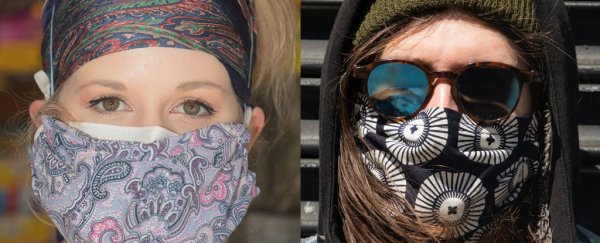Fabric masks, either homemade or store-bought, can help prevent the spread of the novel coronavirus in settings where physical distancing is difficult, according to new research that informed the World Health Organisation's updated guidelines on mask wearing.
The guidelines, set to be released today, detail the type of fabric masks that are effective. They should have three layers: an inner layer that absorbs, a middle layer that acts as a filter, and an outer layer made from a non-absorbent material like polyester.
Those layers in that order can "provide a mechanistic barrier," epidemiologist Maria D. Van Kerkhove, the WHO technical lead on COVID-19, said during a media briefing from Geneva Friday. The guidance, she emphasised, is based on "new, novel research" commissioned by the WHO.
Fabric masks should also be cleaned and worn correctly, since contaminated hands can infect a person adjusting their mask or frequently taking it on or off, Tedros Adhanom Ghebreyesus, the WHO director-general said.
The specifics of how to wear and clean them will be included in the soon-to-be-released guidance.
The updated guidelines also encourage people working in clinical settings in areas with widespread coronavirus transmission to wear medical masks – even if they're not working directly with COVID-19 patients.
"That means for example, that when a doctor is doing a walk around on the cardiology or palliative care units, where there are no confirmed COVID-19 patients, they should still wear a medical mask," Tedros said.
They also say that, in areas with community transmission and in settings where physical distancing is difficult, like on public transportation or in a grocery store, governments should encourage community members to wear masks.
Those over 60 and with underlying conditions should wear medical masks in such situations, the director-general said.
The WHO stressed that masks alone cannot defeat the virus
What hasn't changed in the WHO mask-wearing guidelines is advice that people who are sick with COVID-19 remain home, consult with their healthcare providers, and seek care if necessary, isolate themselves, and have their contacts quarantined.
"If it's absolutely necessary for a sick person or a contact to leave the house, they should wear a medical mask," Tedros said.
The WHO still recommends that caretakers of COVID-positive people should wear a medical mask while in the same room as the infected person, and that healthcare workers wear medical masks and other PPE when working with suspected or confirmed COVID-19 patients.
And the organisation continues to emphasise that masks alone cannot defeat the coronavirus, and can lead to a false sense of security leading people to slack on other important prevention measures.
"I cannot say this clearly enough: Masks alone will not protect you from COVID-19. Masks are not a replacement for physical distancing, hand hygiene, and other public health measures," Tedros said.
"Masks are only of benefit as part of a comprehensive approach in the fight against COVID-19," he continued. "The cornerstone of the response in every country must be to find, isolate, test, and care for every case, and to trace and quarantine every contact. That's what we know works."
This article was originally published by Business Insider.
More from Business Insider:
